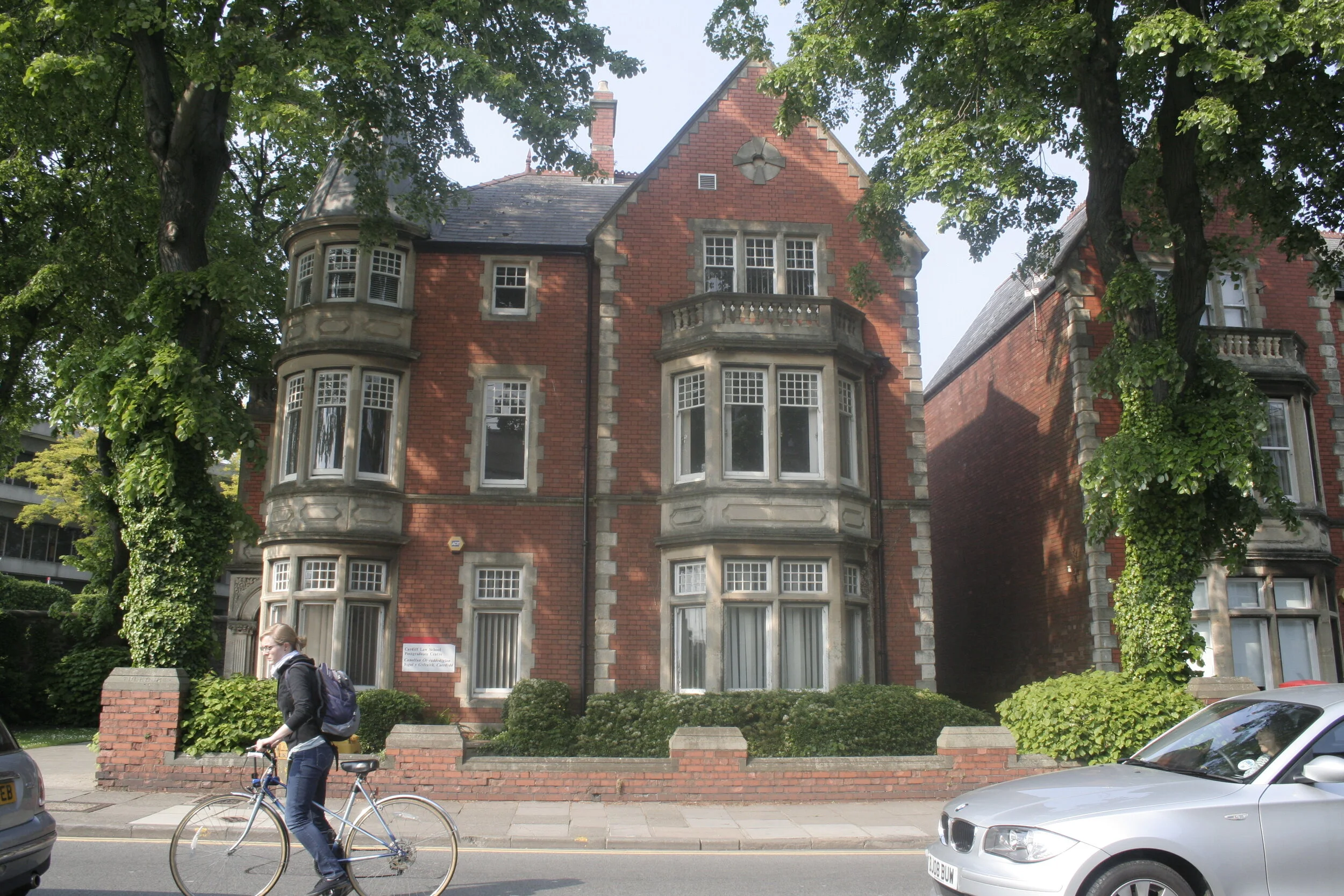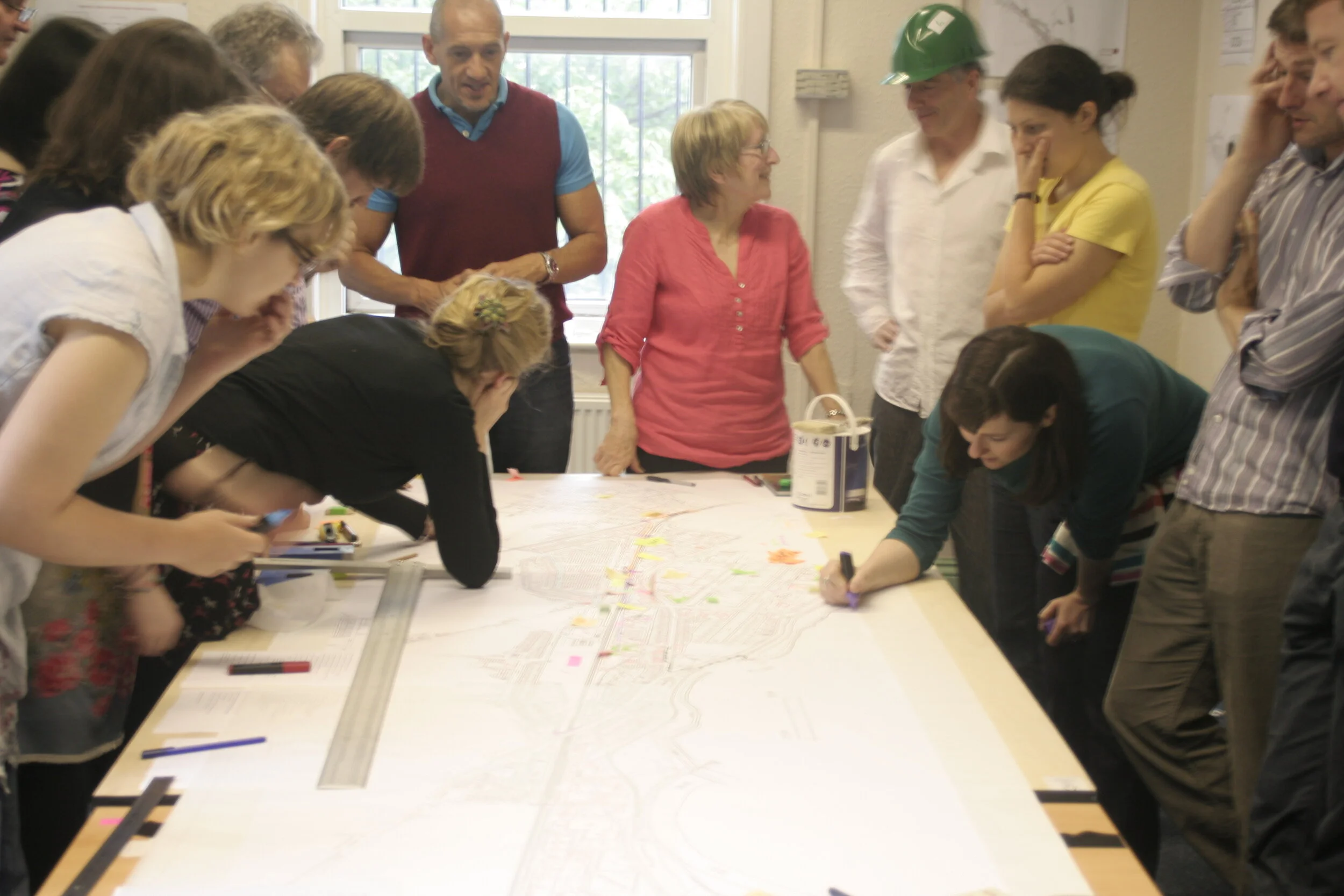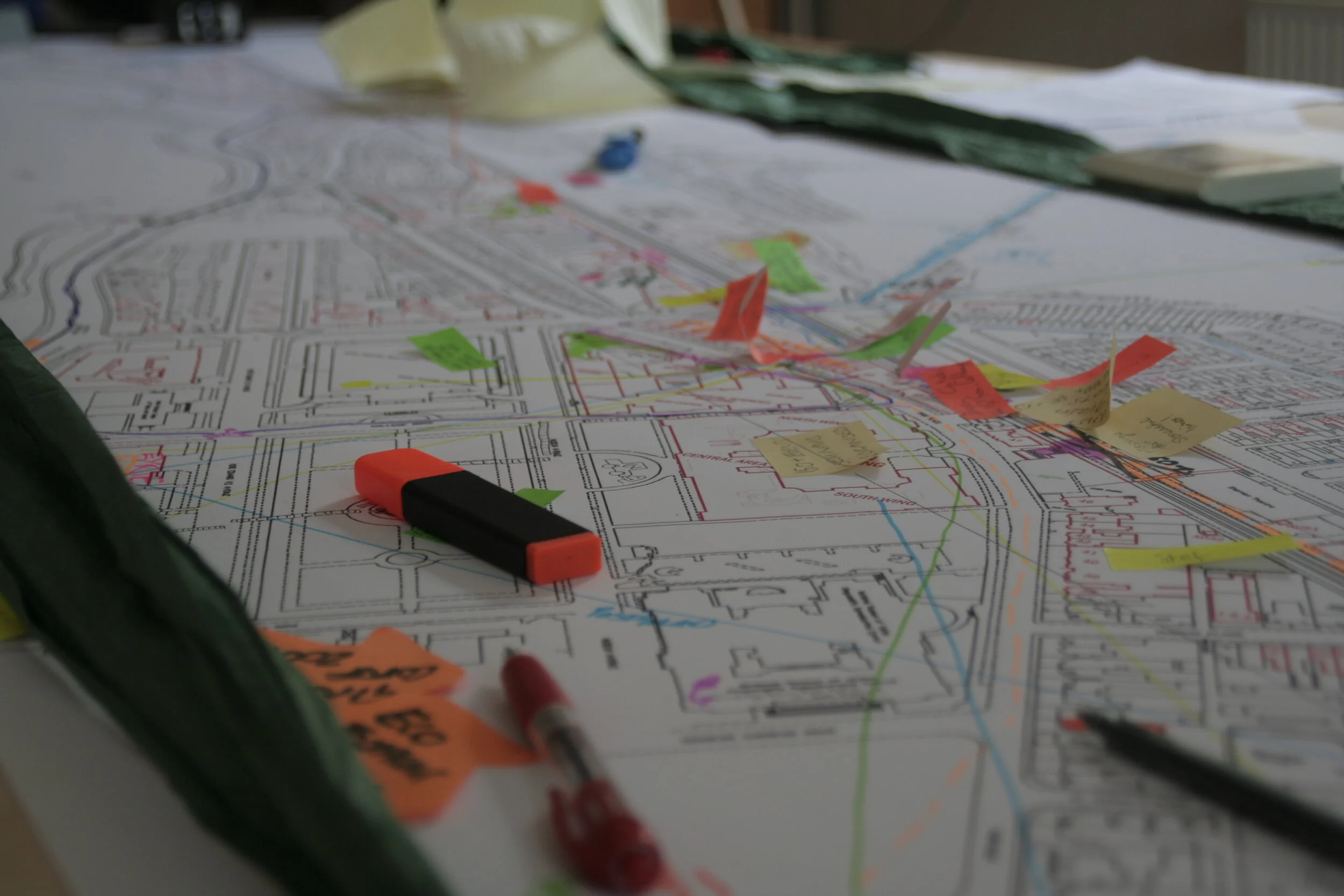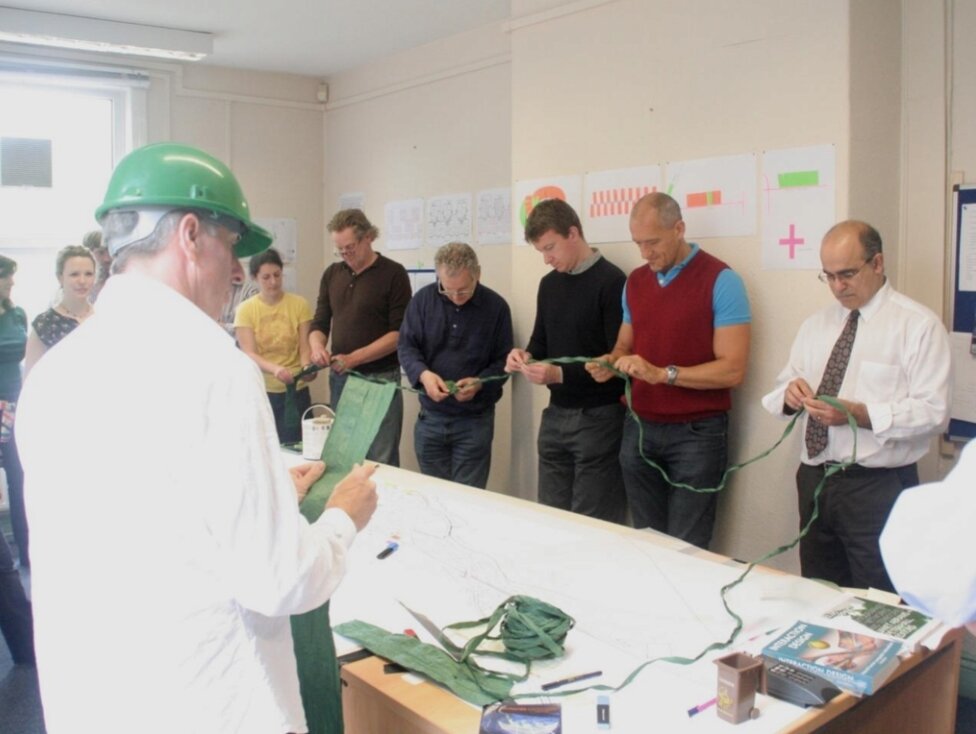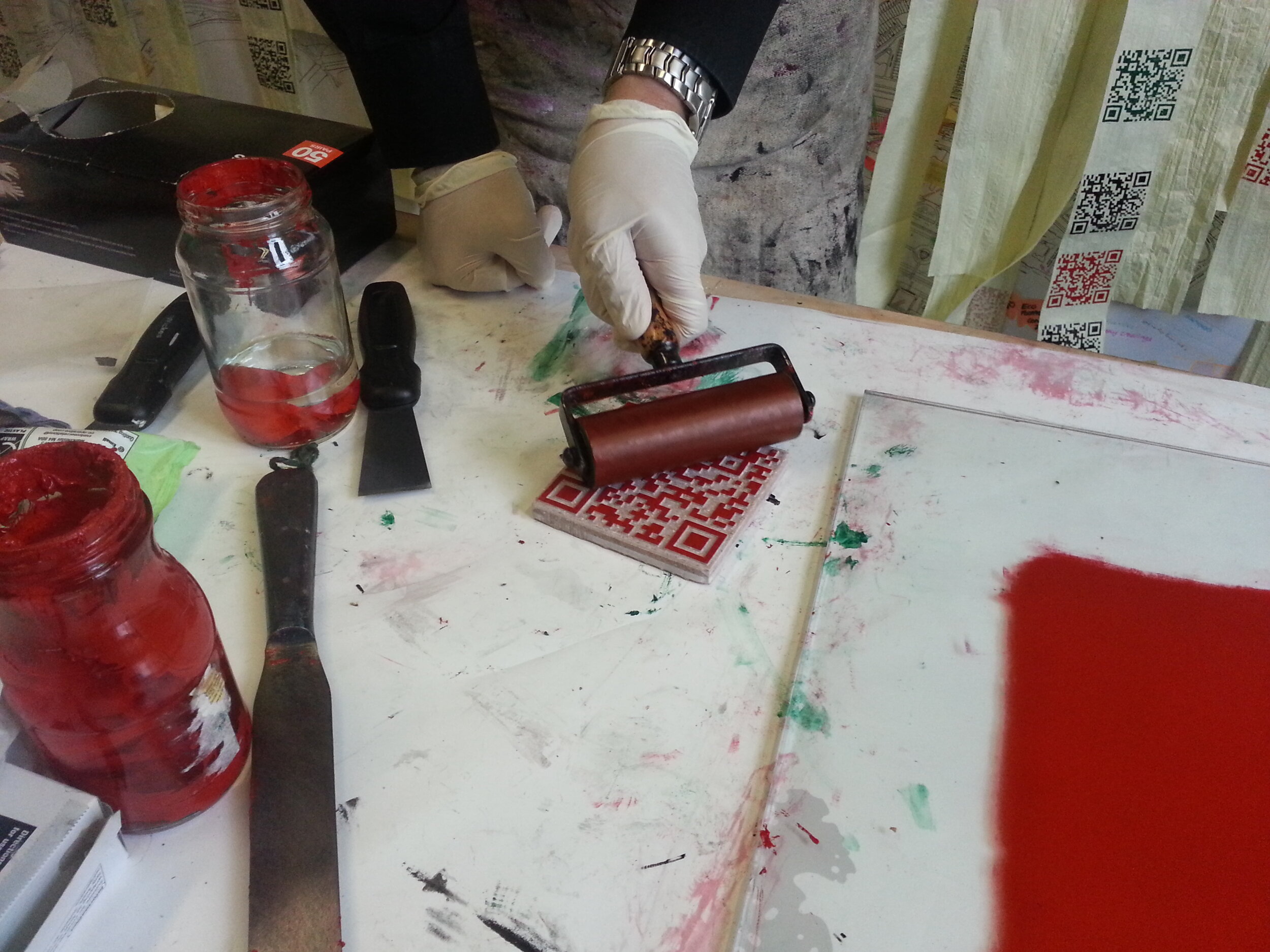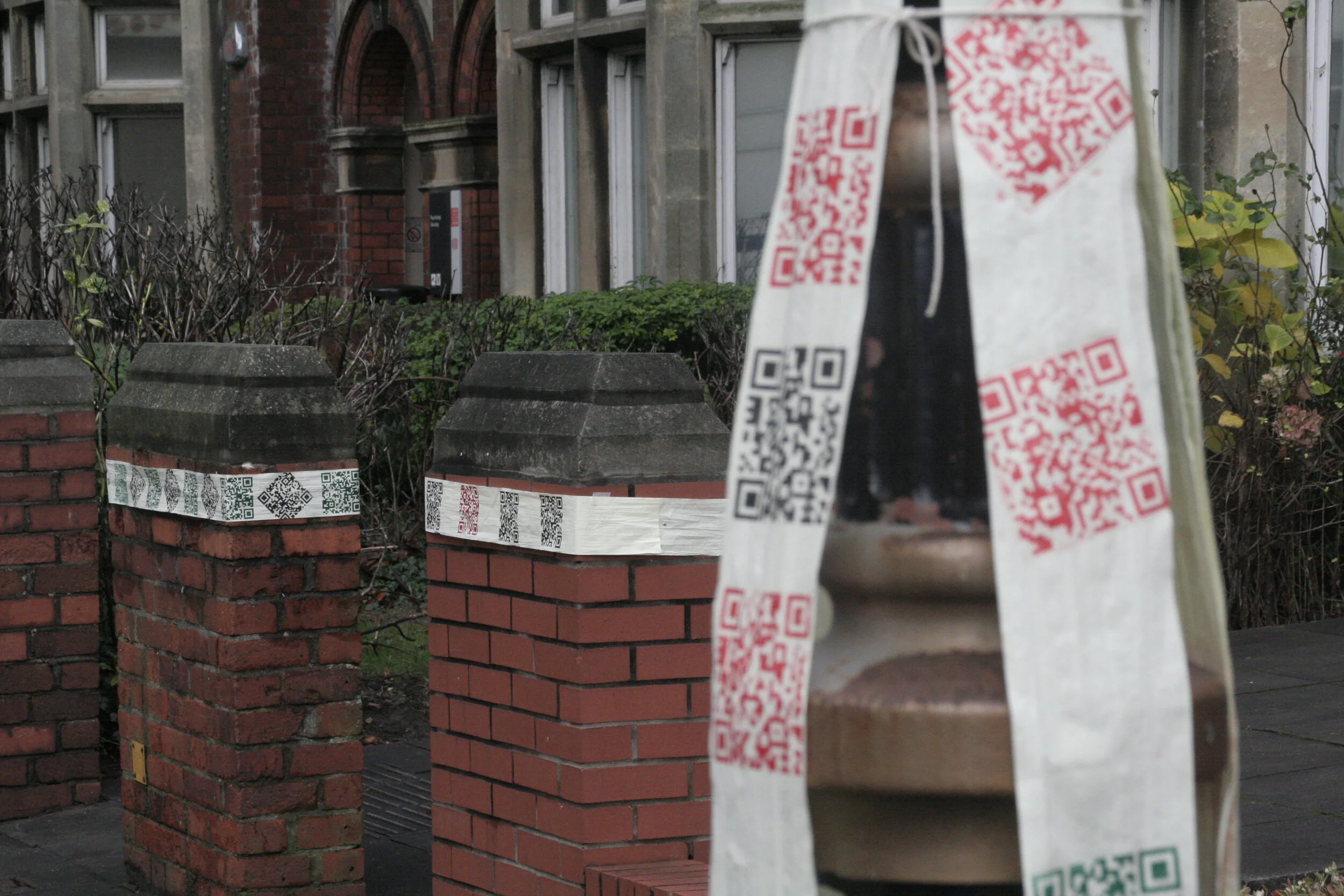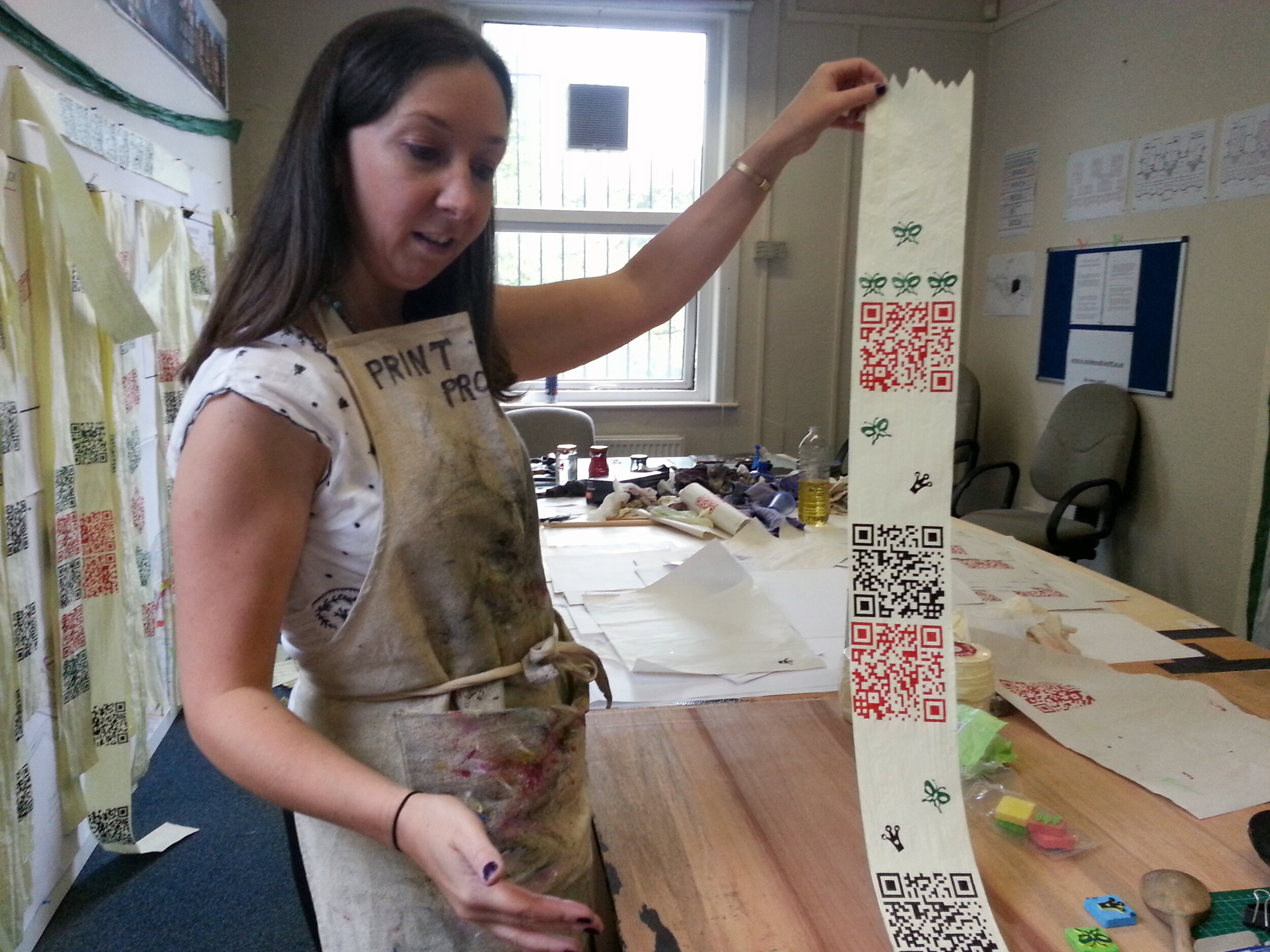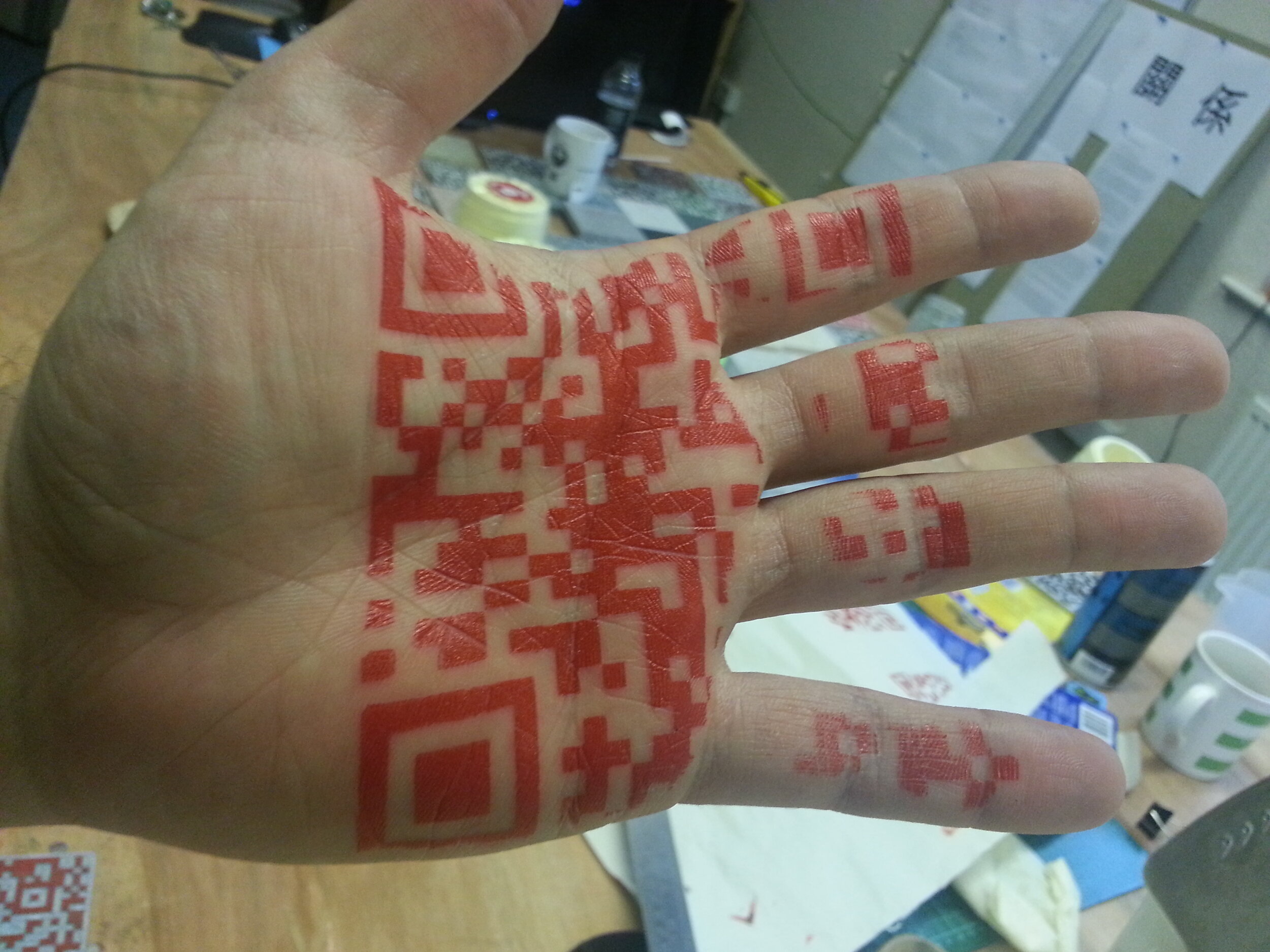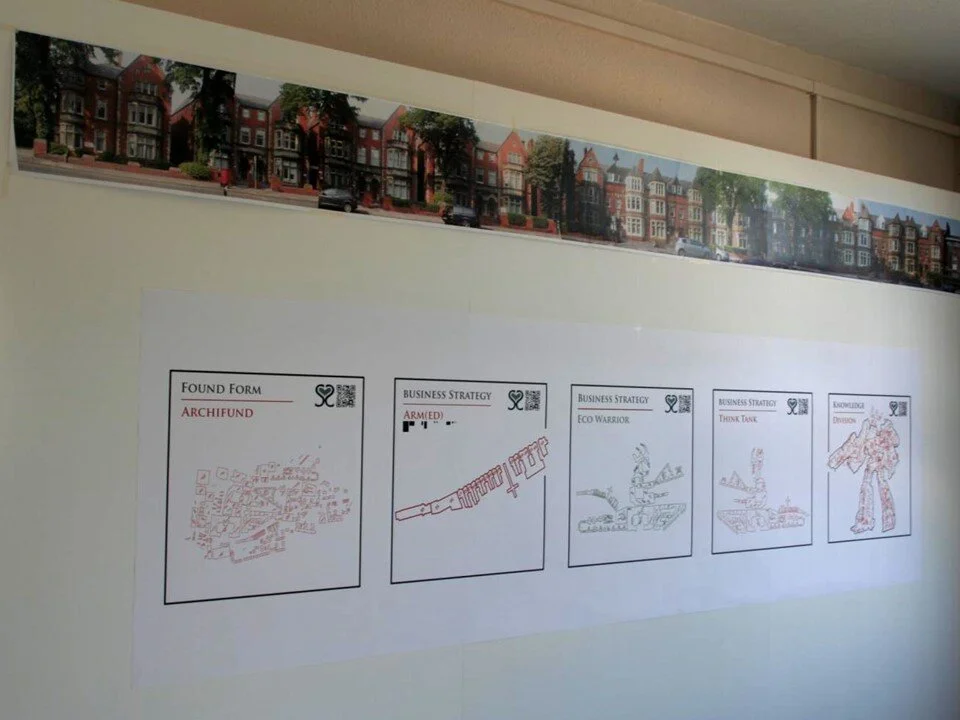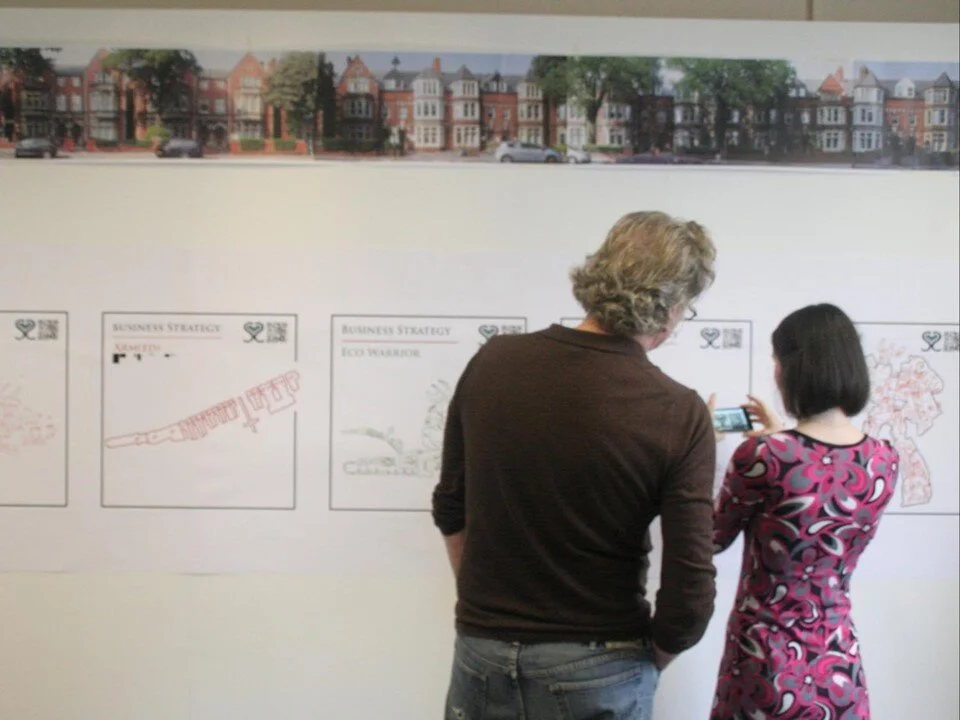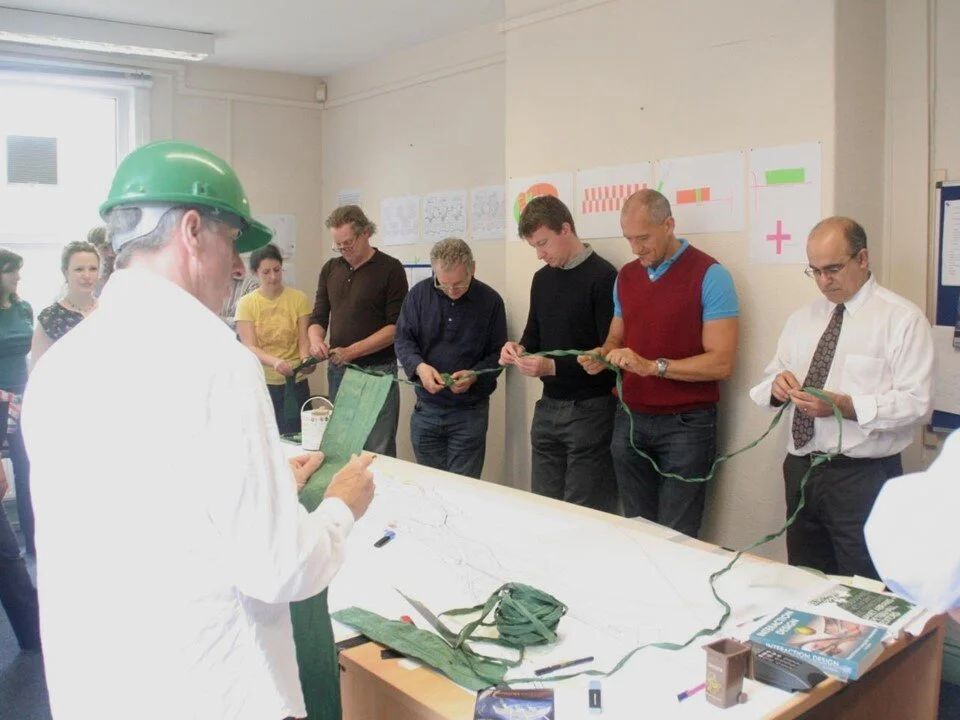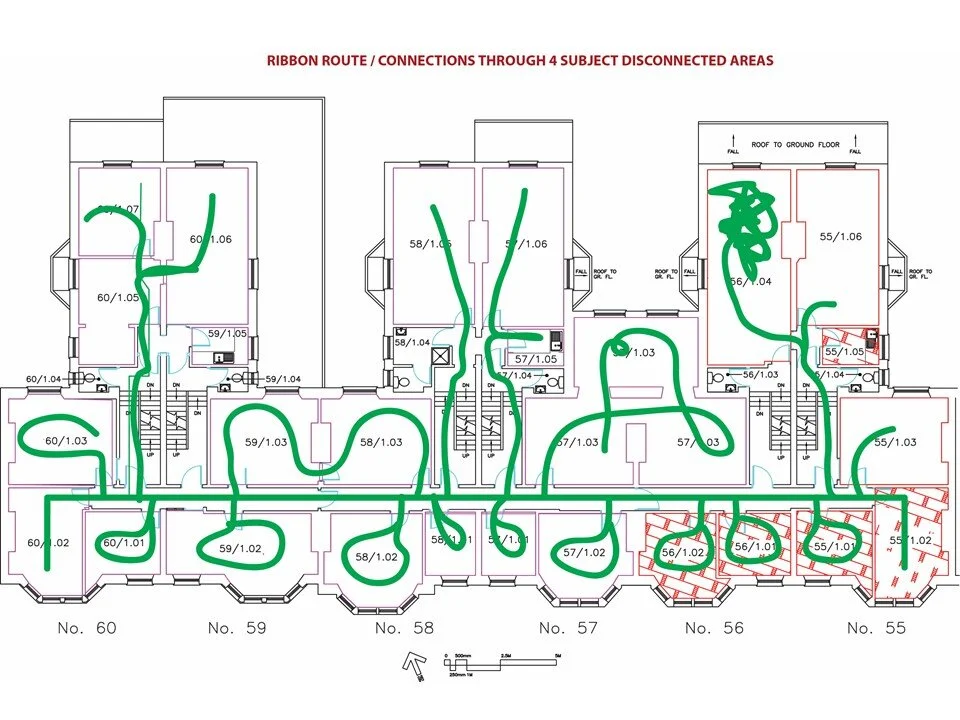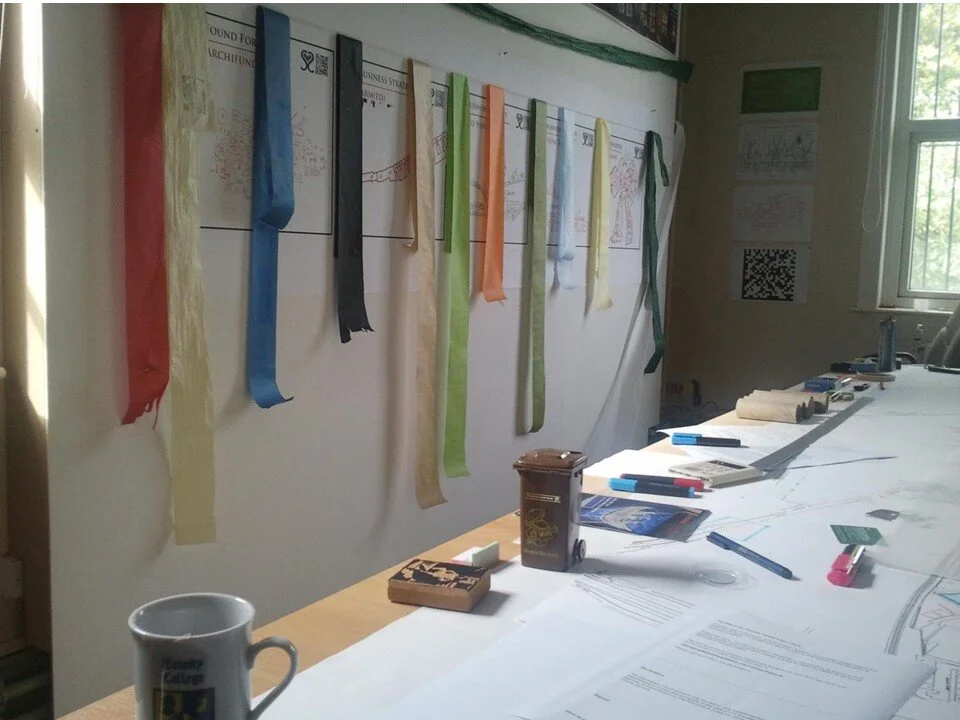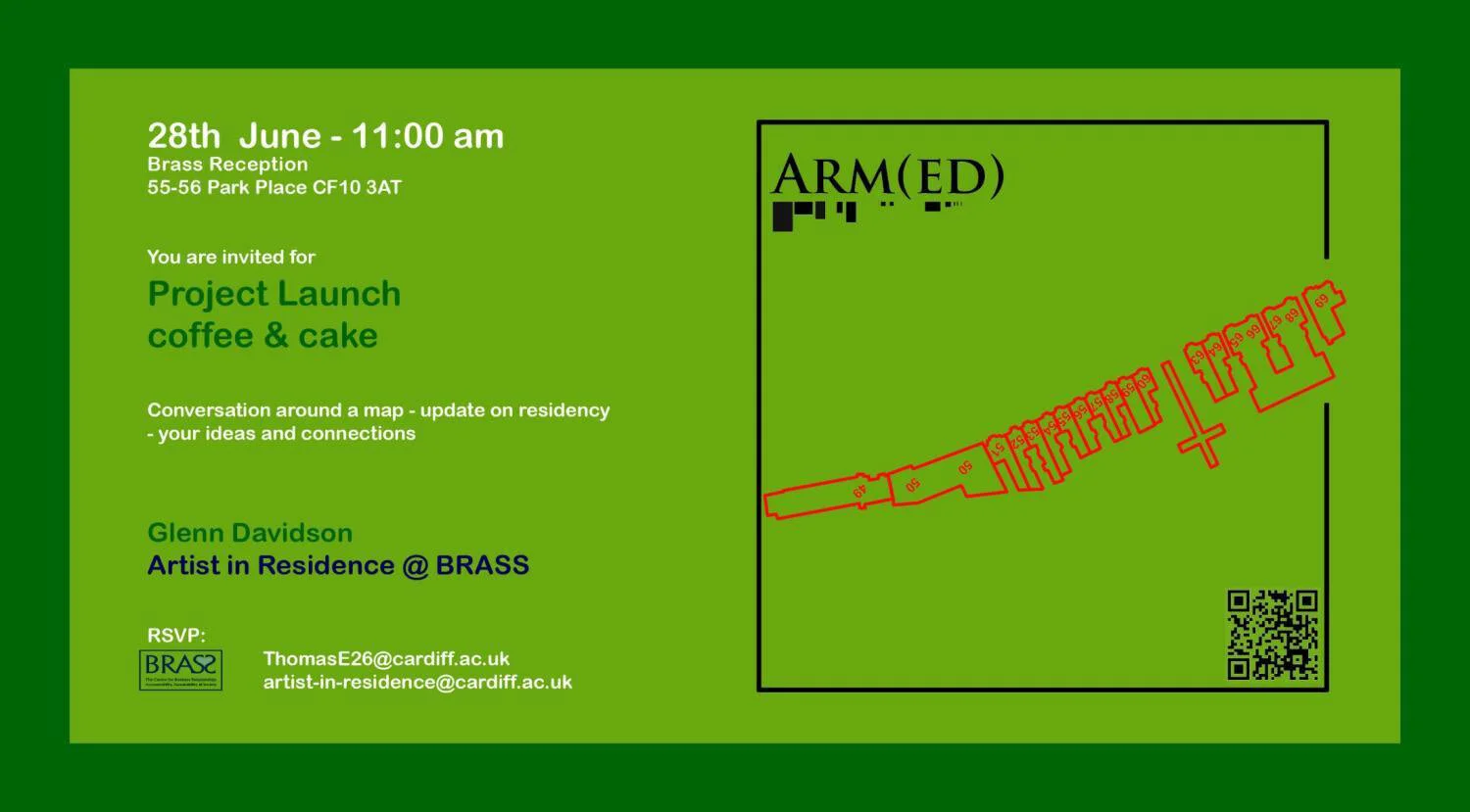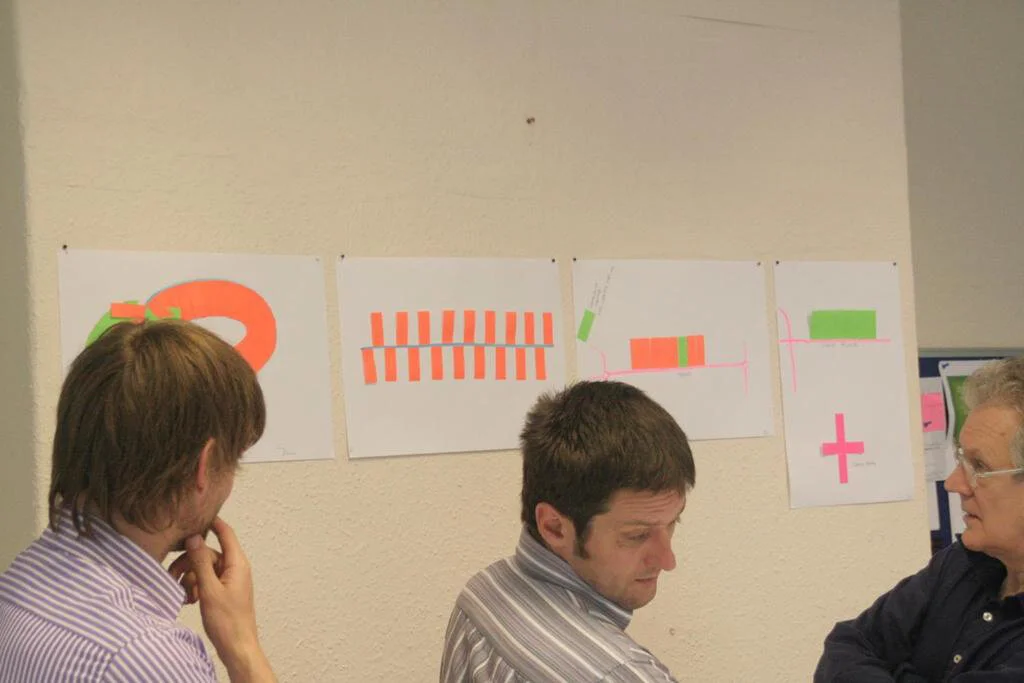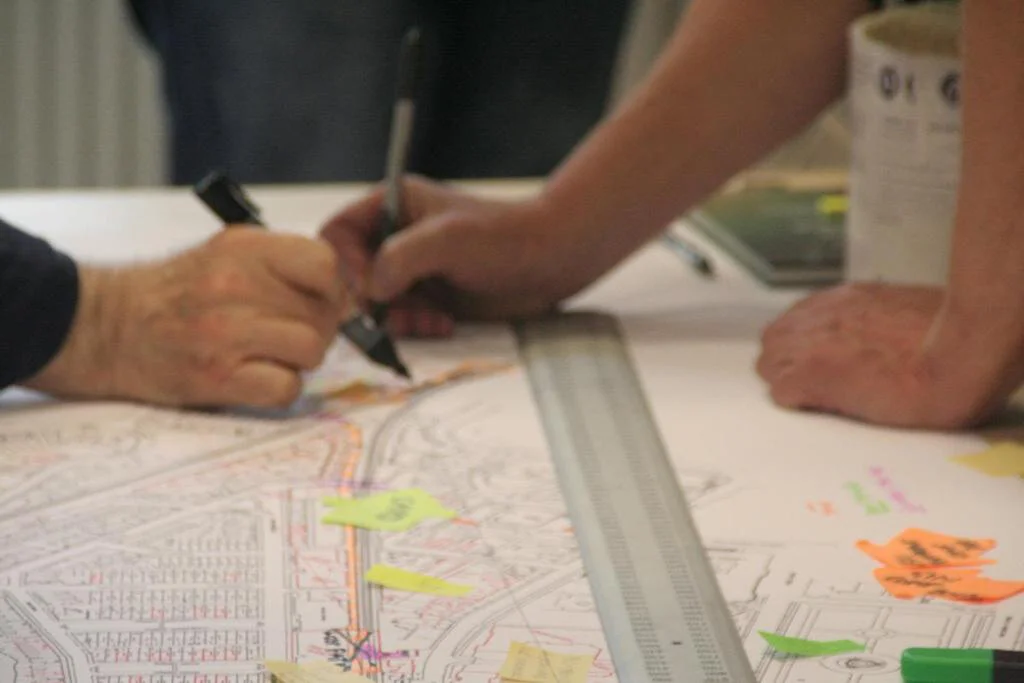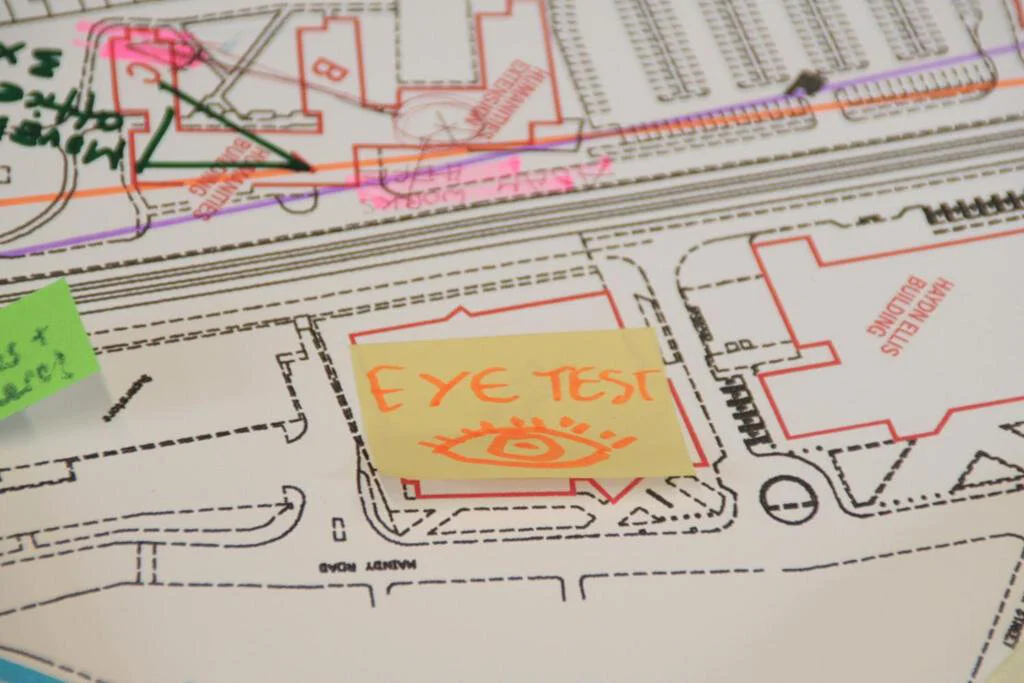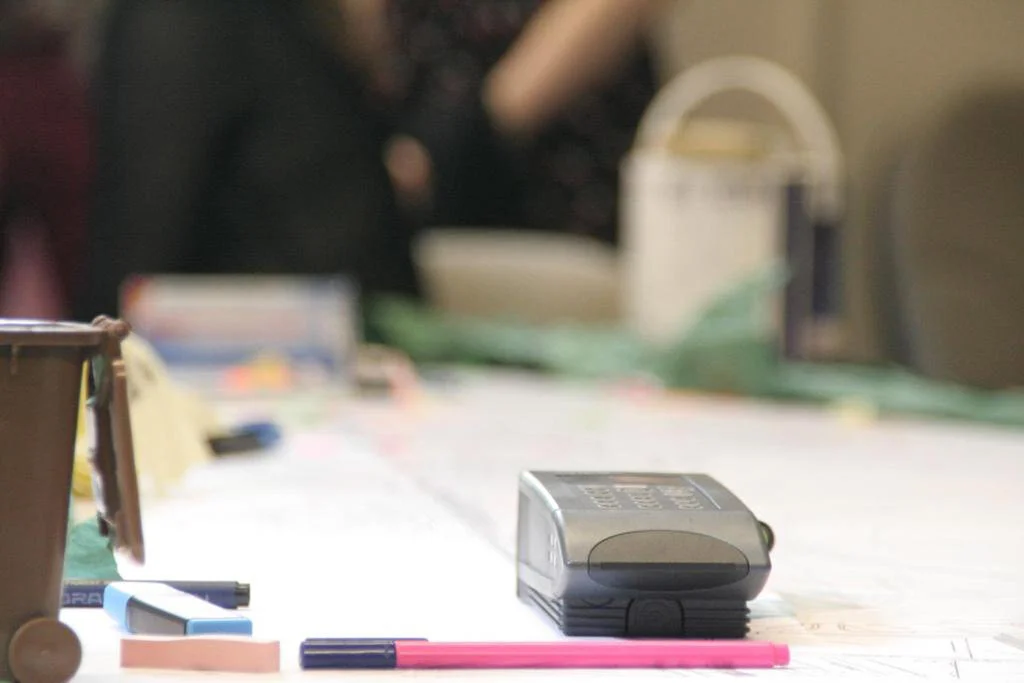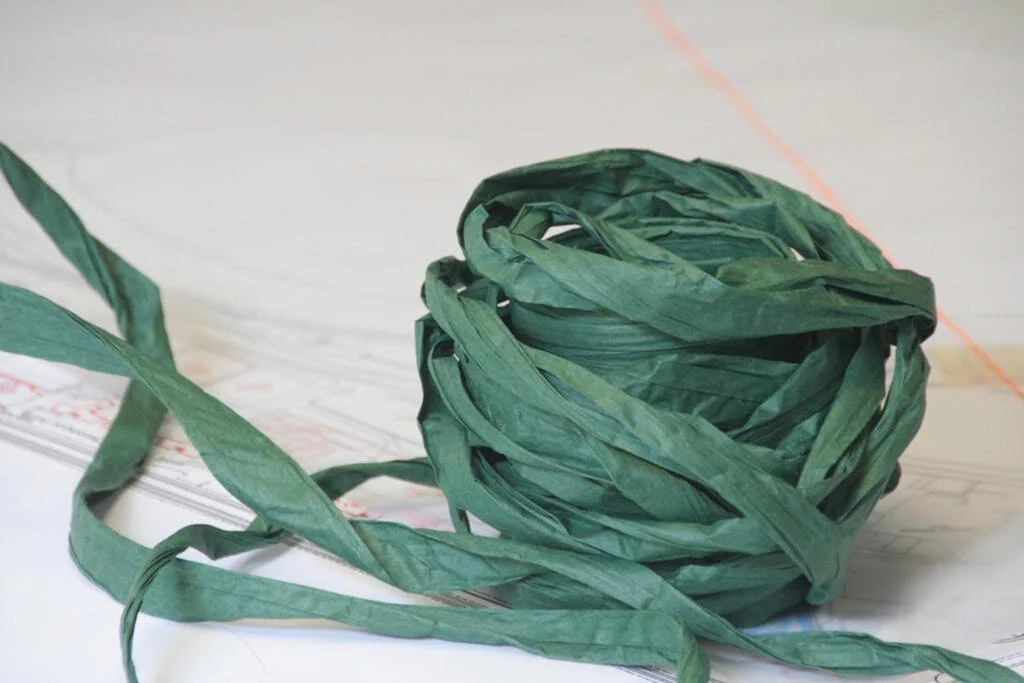BRASS, 2012
artist in residence
Glenn Davidson was Artist in Residence at the ESRC research centre BRASS - Business Relationships Accountability, Sustainability and Society at Cardiff University starting April 2012.
The works are based on observations and responses to the spatial and temporal ecology of the university and the BRASS team.
ARTWORKS
Five pictographic images "Interstitial Works" exploit the university Estates department map. They revealed an organism within the city at large. The great adventure of the work focuses down to the terrace of lofty Victorian houses, among the buildings colonised by the university over the past 50 years and home to the BRASS centre on Park Place.
A connecting corridor has been inserted through the first floor of the terrace, building to building, apparently connecting schools and rooms. The longitudinal aperture disrupts the Victorian orthodoxy of internal space. This produces the 'bedsit effect' where rooms are disproportionately divided, thoroughfares disjointed. Movement through the space is illogical and disorientating. People tend not to speak to each other, adjacent rooms remain as though in parallel universes - knowledge silos - a deep underlying un-sustainability....
A series of framed prints: reconfigured the footprint map of Cardiff university buildings across the city.
MAPPING
Below, a workshop engaged staff and researchers with paths in 'university life' and awareness of other departmental relationships. Notations and stories were made on the routes and connections people had created during their time in the university responding to questions from the artist. Colleagues from architecture and linguistics were also invited to participate.
QR RBBON PRINTS
In the next phase researchers and staff come together to make hand crafted ribbon works and digital identity pages with the artist. These point at current trends in the university promotion and communications culture surrounding the September 2012 'fresher' student intake.
For many in BRASS this provided a new reflective opportunity, highly unusual within the academic environment. Individual sessions were conducted in which researchers talked to the resident artist about their identity and motivation as investigators of sustainability.
Researchers were initiated into the production of a handmade prints on Chinese fiesta raffia ribbon paper. Ink images were produced using a unique stone (Corian) print block engraved with a Quick Response {QR) code. These were designed and created specifically for each researcher by the artist. Simple linier compositional choices were made identifying different QR print placements, ink colours, density of print pressure, spacing and image frequency.
DIGITAL IDENTITIES
The second part was to create a digital identity to be accessed through the printed QR codes. Digital identities were constructed from an exploration of the visual, poetic, systemic and many other aspects of researchers motivations with the artist.
The results are digital identities that illuminate the character of their work and stimulate connections to a wider public. In some cases researchers adopted novel titles for their research personas, "hopeful traveller", "food sleuth" etc.
The unique digital identities, once created by the artist, are accessed by scanning the QR ribbon prints using a common mobile phone app, or via the following weblink below. (click image)
The ribbons and QR stones belong to the researchers, who may, in the future, decide to cut the ribbon up, post parts to others, or simple hang or frame the work for a special place. The QR ribbon is an analogue gateway to a digital identity, they are conceived to adorn doors or thresholds, giving enticing glimpses of what kind of activity is undertaken behind the closed door of often bland research environments.
This new approach brings a level of legibility and visibility to the research environment. It transforms the personal choices and characteristics of the researcher through a graphic dimension beyond the scope of standard academic practice. The process reinvigorates those subject to the side effects of 'reductionism', the narrowing down, specialising, producing ever more complex language, so much a part of advanced academic life.
The QR Ribbon process provides a reflection on the important impulses and influences that bring research into being in the first place. The QR process constitutes 'wide field research' ('discussion': G. Davidson, M. Fedeski, C Suau, Cardiff. 2012). Broader means of distribution are required for important ideas in the complex communication environment. The QR stones may help, the artworks are durable and can outlive both research and author.

' Message ' 2012 Welsh slate & oak
